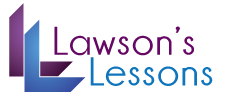Mixed Signals
Signaling the end of a speech.
OBJECTIVE: The students will observe different methods of signaling the end of a speech and then use their knowledge to guess when the end of a speech is coming.
MATERIALS: Visual aid posters; a final main point poster and a summary poster.
Four different speech blips; each containing the tail end of a final main point and a conclusion.
STEPS:
1. Explain to the class that it is important to keep your audience aware of where you are in your speech, and that signaling the end of your speech will help your audience to stay with you all the way to the end.
2. Choose a few different methods of signaling. In this case I have chosen to use vocal signaling, physical signaling, and visual aides.
3. Perform a speech blip without visual aides, and without any kind of change in voice or physicality. Ask the students if they would pay attention to an entire speech of that nature.
4. Now have the students listen for the signals and yell out “Now!” or “End!” when they think you have used one of the signals.
5. Demonstrate vocal signaling using another speech blip. When moving to the conclusion, change your voice to a more final and authoritative tone than you were using in the final main point. Continue till you are stopped.
6. Demonstrate physical signaling using another speech blip. Take a few steps and change your hand gestures to move from point to conclusion. Continue till you are stopped.
7. Demonstrate visual aide use by switching from the point poster to the summary poster. Continue till you are stopped. This may seem obvious, and it is, but explain that when you put all of the methods together, they can be used more subtly in order to make for a more pleasant speech.
RESULT: The students now have a visual and audio example of these methods. Hand out multiple copies of the four speech blips you used. Assign each student a signaling method to perform for the next class period.
What Were We Talking About Again?
Topic: Signaling the end of the speech in the conclusion
Objective: Following the lesson on signaling the end of the speech in the conclusion, the students will be able to write five sentences that show their ability to signal the end of the speech.
Materials: Worksheets
Steps:
- Make sure the students understand why it is important to signal the end of the speech in the conclusion.
- It is important to tell the audience that you are almost finished.
- You want to give them time to prepare for questions, or just to know what’s happening next
- Give the students some examples of good signaling sentences and not so good signaling sentences.
- In closing, recycling is something that is very important for keeping the environment healthy.
- Now that we have discussed how to use a bicycle, how to fix a bicycle, and how to buy a new bicycle…
- My speech is finally over so I hope you aren’t bored.
- That’s it, I’m done!
- Pair the students up and see if they can come up with any other good ways to signal the end of the speech and how that would be effective.
- Have the students share with each other about what they came up with or what made the activity difficult.
- Give them the worksheet and have them write five signaling sentences using the speech topics given to them.
- Walk around and help them if needed.
Results: As the result, students should be able to write effective signaling sentences in their conclusion. I would proceed with more discussion about conclusions and how to write them after this lesson.
Name:_________________________________
Writing Signaling Sentences
Use the examples you learned from class to write five appropriate sentences that signal the end of the speech in the conclusion. If you would like to come up with other examples, you may.
Speech topic: Cafeteria Food
1.)___________________________________________________________________________________
_____________________________________________________________________________________
___________________________________________________________________________________.
Speech topic: Obesity
2.)___________________________________________________________________________________
_____________________________________________________________________________________
____________________________________________________________________________________.
Speech topic: The popularity of cell phones
3.)___________________________________________________________________________________
_____________________________________________________________________________________
____________________________________________________________________________________.
Speech topic: The importance of math
4.)___________________________________________________________________________________
_____________________________________________________________________________________
____________________________________________________________________________________.
Speech topic: How to use facebook
5.)___________________________________________________________________________________
_____________________________________________________________________________________
____________________________________________________________________________________.
Abbie Weidner
16 September 2009
